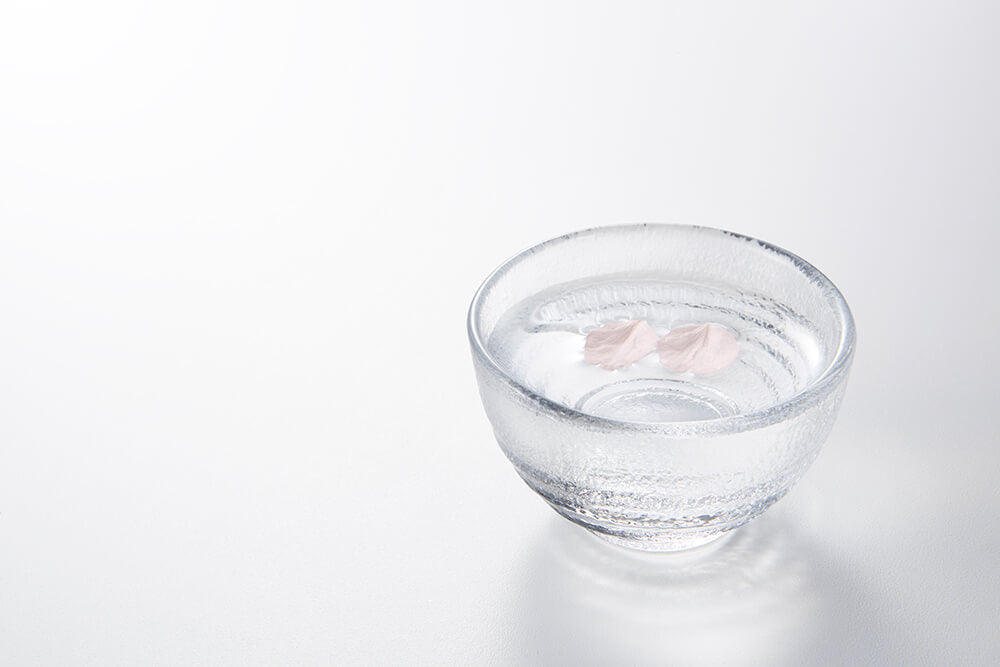
skin pH

the bottom line
You may have heard or read about “pH-balanced skin care” without knowing what it means or why it’s important for your skin. Skin pH actually plays a significant role in skin barrier homeostasis, integrity of the stratum corneum, and antimicrobial defense systems. to learn more about the critical role of pH in skin health, keep reading.
first layer: what is pH?
A quick review: pH is defined as the “potential of hydrogen”, which concerns the activity of hydrogen ions in a water-based solution. Recall the chemical formula for water – H2O – which indicates that water is made of two hydrogen atoms and one oxygen atom. pH uses a scale from 0-14, with a pH of 7 considered to be neutral. A pH below 7 is acidic, while a pH greater than 7 is alkaline or basic. Contrast highly acidic lemon juice with a pH of 2, with ammonia, which has a very alkaline pH of 12. The pH scale is logarithmic rather than linear. There’s a tenfold difference between pH numbers, so a pH of 3 is 10 times more acidic than a pH of 4.
second layer: the pH of the skin
The term “acid mantle”, or Säuremantel, was first used almost a century ago by Schade and Marcionini to describe the inherently acidic nature of the stratum corneum*. We now know that the pH of the skin plays a significant role in skin barrier* homeostasis, integrity of the stratum corneum, and antimicrobial defense systems.
The pH of skin is naturally acidic with a range from 4-6 and an average pH of 4.7. The internal environment of the body is closer to neutral with a pH range of 7-9, so there is a steep increase in pH from the stratum corneum to the deeper epidermis and dermis. The skin pH and buffering capacity of the skin surface occur because of contributions from the stratum corneum as well as secretions from sebaceous and sweat glands.
There are both endogenous and exogenous factors that can affect skin pH. Endogenous factors include age, gender, anatomic site, race, sebum, skin moisture, and sweat. At lower and higher ages, the skin pH is more neutral. Newborns have a pH near 7 which rapidly declines to an acidic level within the first month. Higher pH levels are known to increase the activity of enzymes which are associated with desquamation*, which may explain why this is seen in the first few days after birth. Higher pH levels have also been noted in the elderly. Alkaline ceramidase, an enzyme responsible for ceramide* deficiency and barrier lipid degradation, is optimal at a pH of 9 and has higher activity in aged skin.
Gender plays a role as well. Although the data is somewhat conflicting, men have generally been shown to have more acidic skin than that of women. More pigmented skin (Fitzpatrick* IV-VI) also tends to have a lower pH when compared to lightly pigmented skin (Fitzpatrick I-III). Superior stratum corneum integrity and barrier function have been observed in darker skin.
More occluded body sites, including the axilla, groin, and inframammary crease, have higher pH values and are considered to represent “holes” in the acid mantle. Higher pH values in the axilla, for example, can lead to colonization by odor-producing bacteria. Deodorants with a lower pH that inhibits this bacterial growth can be effective.
Exogenous factors affecting skin pH include soaps and cosmetics, occlusive dressings, skin irritants, and topical antibiotics.
third layer: pH and skin pathology
Skin barrier function and stratum corneum homeostasis have been determined to be optimal at pH values below 5.0. The formation of the stratum corneum’s barrier requires several pH-dependent enzymes; two of the key enzymes responsible for the synthesis of ceramides are optimal at acidic pH levels and the processing of lipids in this location also requires an acidic environment. Elevations of skin pH can create a disturbed skin barrier with increased activity of desquamating enzymes and reduced activity of ceramide-generating enzymes.
The acidic pH of the skin also plays a role in the microbiome* by helping to keep it balanced; an acid skin pH of 4-4.5 keeps resident bacterial flora adhered to the skin while a more alkaline pH is associated with their dispersal. Normal skin flora including Staphylococcus epidermidis shows growth at pH 4.7 while pathologic Staphylococcus aureus and Propionibacterium acnes are suppressed.
When the skin’s pH is repeatedly disrupted with highly acidic (pH 2.5 or lower) or highly alkaline (pH 8 or higher) substances, various skin disorders can be exacerbated, and it take longer for skin to recover. However, mild disruptions in the skin’s pH, for example from an alpha-hydroxy acid (AHA) or beta-hydroxy acid (BHA) (pH 3.5) or a mineral sunscreen (pH 7.5) are temporary, and the skin will typically equilibrate to a normal pH within an hour.
Various skin diseases associated with higher pH levels include acne, atopic dermatitis, irritant contact dermatitis, and ichthyosis:
- atopic dermatitis*: atopic dermatitis is a type of eczema remarkable for red, flaky, itchy skin, typically affecting the inner elbows and behind the knees. It's often seen in conjunction with allergic rhinitis, hay fever, and asthma. In one study of children with atopic dermatitis, significantly higher pH levels were noted in both their eczematous skin and regions of uninvolved skin. Areas with more intense itching and dryness also showed higher pH values. Impaired skin barrier function in atopic dermatitis has been attributed to disturbed synthesis, excretion, and maturation of lipids of the stratum corneum which are dependent upon an acidic environment.
- icthyosis*: ichthyosis is a group of skin disorders characterized by dry, scaly, or thickened skin. Higher skin pH levels have been found in patients with ichthyosis vulgaris. Filaggrin, a protein which is thought to play a role in acidification of the stratum corneum, is reduced in ichthyosis vulgaris, and normal desquamation of the skin is thus disturbed. Acid preparations promote keratolysis* and are effective in ichthyosis.
- irritant contact dermatitis*: patients with irritant contact dermatitis have also shown higher pH levels when compared to healthy patients. The subsequent decline in integrity of the stratum corneum and skin barrier homeostasis exacerbates the skin’s predisposition to injury from exposure to detergents and mechanical forces.
- acne: Acne is marked by the hyperproliferation and disordered keratinization* of the follicular epithelium* with sebaceous gland overactivity and colonization by the bacteria Propionibacterium acnes. The pores can then become clogged with varying degrees of inflammation. Skin predisposed to acne is felt to be in a constant state of subclinical inflammation, with alterations in skin barrier function and barrier integrity. One study of 200 patients with acne and 200 patients with normal skin compared skin pH levels and found that acne patients had significantly higher levels (average of 6.35 vs 5.09). Propionibacterium acnes has been shown to grow well at pH values between 6-6.5 with markedly reduced growth at pH levels below 6. When the pH of the skin surface is lowered in acne patients, the inflammatory response is also lowered, and barrier function recovery is enhanced.
fourth layer: the pH of skin care products and how we do it
pH is only measured when hydrogen atoms within water are present – oil products do not have a pH. The term “pH-balanced” indicates that the product has been formulated within a pH range of healthy skin, typically 4-7. Ideal ranges for specific types of products include the following:
- cleansers: pH 4.5-7
- toners: pH 5-7
- serums: pH 4-6
- moisturizers: pH 5-7
- alpha hydroxy acid and beta hydroxy acid exfoliants: pH 3-4
- vitamin C products: pH 2.5-3.2
Products with different pH levels can be layered onto each other safely without the need for a waiting period. An acidic product has been stabilized during formulation to avoid shift, and therefore will not change the pH of a more basic product which is applied immediately after it.
anokha’s products are carefully pH-balanced for optimal skin health. All water-based products maintain a pH between 4.5-6, and each manufacturing batch is checked and adjusted as needed prior to filling. We also conduct stability testing to ensure that the pH does not shift with time or temperature.
Feed your beautiful mind: www.anokhaskincare.com .
xx
anokha
references:
- https://www.paulaschoice.com
- Lambers H, Piessens S, Bloem A, Prink H, Finkel P. Natural skin surface pH is on average below 5, which is beneficial for its resident flora. Int J Cos Sci 2006; 28: 359-370.
- Surber C, Humbert P, Abels C, Maibach H. The Acid Mantle: A Myth or an Essential Part of Skin Health? Curr Probl Dermatol. 2018; 54: 1-10.
- Schmid-Wendtner MH, Korting HC. The pH of the skin surface and its impact on the barrier function. Skin Pharmacol Physiol. 2006;19(6):296-302.
- Ali SM, Yosipovitch G. Skin pH: From basic science to basic skin care. Acta Derm Venereol 2013; 93: 261-267.
- Schade H, Marchionini A. Der Säuremantel der Haut nach Gaskettenmessngen. Klin Wochenschr 1928 ; 7 : 12-14.
- Rippke F, Schreiner V, Schwanitz HJ. The acidic milieu of the horny layer: new findings on the physiology and pathophysiology of the skin pH. Am J Clin Dermatol 2002; 3: 261-272.
- Gunathilake R, Schurer NY, Shoo BA, et al. pH-regulated mechanisms account for pigment-type differences in epidermal barrier function. J Invest Dermatol 2009; 129: 1719-1729.
- Seidenari S, Giusti G. Objective assessment of the skin of children affected by atopic dermatitis: a study of pH, capacitance and TEWL in eczematous and clinically uninvolved skin, Acta Derm Venereol 1995; 75: 429-433.
- Eberlein-König B, Schäfer T, Huss-Marp J, et al. Skin surface pH, stratum corneum hydration, trans-epidermal water loss and skin roughness related to atopic eczema and skin dryness in a population of primary school children. Acta Derm Venereol 2000; 80: 188-191.
- Fartasch M, Diepgen TL. The barrier function in atopic dry skin: disturbance of membrane-coating granule exocytosis and formation of epidermal lipids? Acta Derm Venereol Suppl 1992; 176: 26-31.
- Ohman H, Vahlquist A. The pH gradient over the stratum corneum differs in X-linked recessive and autosomal dominant ichthyosis: a clue to the molecular origin of the “acid skin mantle”? J Invest Dermatol 1998; 111: 674-677.
- Hachem JP, Crumrine D, Fluhr J, et al. pH directly regulates epidermal permeability barrier homeostasis, and stratum corneum integrity/cohesion. J Invest Dermatol 2003; 121: 345-353.
- Prakash C, Bhargava P, Tiwari S, Majumdar B, Bhargava RK. Skin surface pH in acne vulgaris: Insights from an observational study and review of the literature. J Clin Aesthet Dermatol 2017; 10(7): 33-39.
- Bergfeld WF. The pathophysiology of acne vulgaris in children and adolescents, Part 1. Cutis 2004: 74(2): 92-97.
- Rocha MA, Costa CS, Bagatin E. Acne vulgaris : an inflammatory disease even before the onset of clinical lesions. Inflamm Allergy Drug Targets 2014; 13(3): 162-167.
- Yamamoto A, Takenouchi K, Ito M. Impaired water barrier function in acne vulgaris. Arch Dermatol Res 1995; 287(2): 214-218.
- Korting HC, Ponce-Pöschl E, Klövekorn W, et al. The influence of the regular use of a soap or an acidic syndet bar on pre-acne. Infection 1995; 23(2): 89-93.
*definitions:
atopic dermatitis: a type of eczema remarkable for red, flaky, itchy skin, typically affecting the inner elbows and behind the knees. it's often seen with allergic rhinitis, hay fever, and asthma.
ceramides: ceramides are lipids found in skin cells which comprise approximately 50% of the epidermis. they are essential for forming the skin's natural barrier to seal in moisture and preventing the entry of harmful elements. lower ceramide levels have been linked to skin diseases including acne, psoriasis, eczema, and rosacea.
contact dermatitis: a skin rash caused by contact with a specific substance. avoiding the trigger typically allows the rash to clear in 2-4 weeks.
desquamation: shedding of the outer layer of the skin. this is a normal process in healthy skin, although some skin diseases will manifest with increased or decreased desquamation.
Fitzpatrick scale: The Fitzpatrick scale is a numerical classification schema for skin color.
follicular epithelium: cells within the hair follicles
icthyosis: ichthyosis is a group of skin disorders characterized by dry, scaly, or thickened skin.
keratinization: keratinization is the acquisition of a horn-like character by the epithelial tissue
keratolysis: the periodic exfoliation of the epidermis
microbiome: all of the genetic material of a microbial community sequenced together.
skin barrier: the skin barrier protects against external agents including mechanical and chemical insults, heat, pathogens, water, and radiation.
stratum corneum: the outermost layer of the epidermis and marks the final stage of keratinocyte maturation and development.
faq’s:
what is pH?
pH is defined as the “potential of hydrogen”, which concerns the activity of hydrogen ions in a water-based solution.
what is the pH of skin?
the skin’s average pH is 4.7 with a range of 4-6.
do men and women have different pH’s of their skin?
the data is somewhat conflicting, but men generally have a more acidic skin pH.
what is the acid mantle?
the term “acid mantle” is used to describe the inherently acidic nature of the stratum corneum.
what is a pH-balanced product?
the term “pH-balanced” indicates that the product has been formulated within a pH range of healthy skin, typically 4-7.



leave us a comment
This site is protected by hCaptcha and the hCaptcha Privacy Policy and Terms of Service apply.